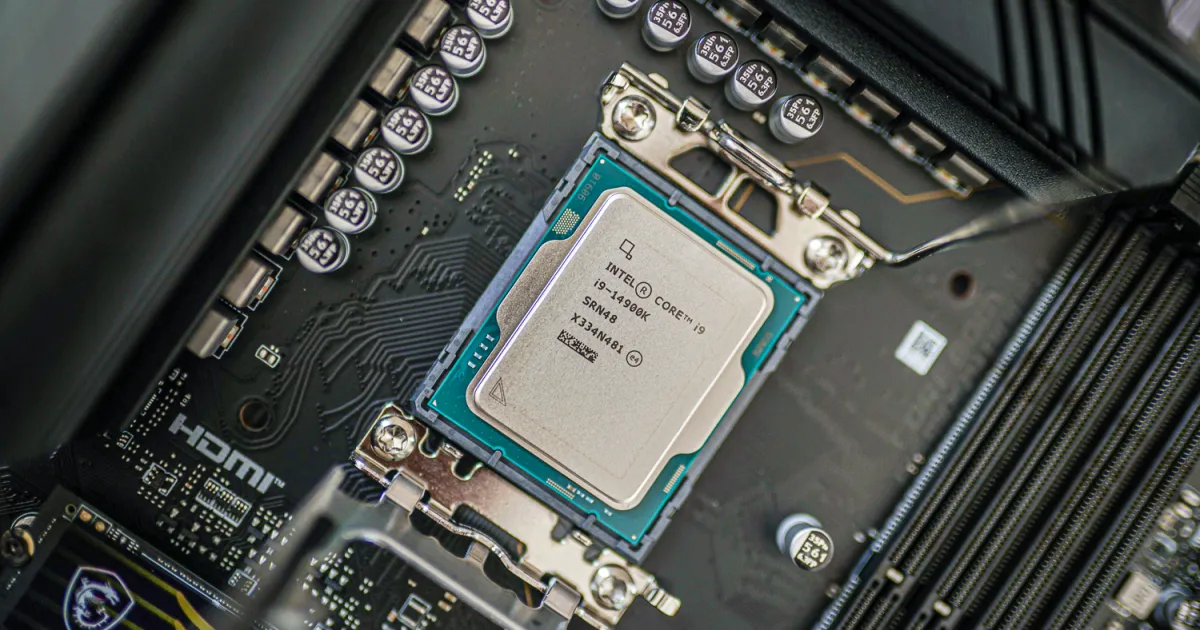🤖📞 How AI-Generated Robocalls are Becoming a Threat to Democracy
AI’s impact on your election vote How to detect and react.
Last month, New Hampshire voters received an unexpected wake-up call from none other than President Joe Biden himself. But wait, there’s a twist. The call turned out to be an AI-generated robocall, urging voters to stay home and not participate in the primary election. Talk about a new level of deception!
The call, which was quickly debunked by the New Hampshire Department of Justice, was the brainchild of Life Corporation, a Texas-based company that used a deepfake library provided by AI startup ElevenLabs. Life Corporation is now facing accusations of voter suppression. This alarming incident serves as a warning sign that AI may very well be used to manipulate and influence future elections.
The potential impact of AI on elections and politics has been a subject of concern for many researchers and organizations. The Brookings Institute, a nonprofit public policy center, highlights the profound impact of generative AI on the production and dissemination of misinformation. They argue that AI has the power to make misinformation more pervasive and persuasive, with each false story or image increasing the chances of it spreading across the media landscape.
The Brennan Center for Justice, a legal nonprofit, has even dubbed the 2020s as the “beginning of the deepfake era in elections.” They report that Republican primary candidates have already started using AI in campaign advertisements, including the famous example of Florida Governor Ron DeSantis’s campaign releasing AI-generated images of former President Donald Trump embracing Anthony Fauci.
But it’s not just AI-generated videos and images that are causing concern. The role of social media in the spread of AI-manipulated content cannot be overlooked. Social media platforms play a major role in AI’s potential threats to democracy and truth. As AI technology becomes smarter and more universal, it becomes increasingly difficult to spot election misinformation.
- 🏀 Get Ready for March Madness: The Ultimate Guide 🏀
- Apple TV Returns with MLS Season Pass for 2024 Soccer Season
- Circular Ring Slim: A Flawed Smart Ring That Falls Short
McKenzie Sadeghi, AI and foreign influence editor for NewsGuard, explains that they have observed AI’s weaponization in various forms, from AI-generated news websites to deepfake videos, audio, and images. NewsGuard has identified 676 websites solely generated by AI and operating without sufficient human oversight. The intersection of AI and “pink slime” networks, which are partisan news outlets pretending to be trusted local news sources, is an area of particular concern.
Looking into the future, the impact of AI on elections and misinformation is expected to grow. NewsGuard predicts that the number of AI-generated websites will continue to increase, potentially reaching the thousands by the time of the next election. This calls for a stronger media literacy and a vigilant approach to spotting AI-generated content.
📜 AI Laws and Regulations: Are We Keeping Up?
The regulation of AI remains a gray area, with congressional leaders struggling to agree on a risk-averse path forward. However, there have been some developments in this area. In October 2023, the Biden administration issued an executive order outlining new standards for AI safety and security. The order includes a directive for the Department of Commerce to establish methods for detecting AI content and scams.
The Federal Communications Commission (FCC) has also taken action to address the rise of AI robocalls and deepfakes. They have proposed outlawing AI robocalls under the Telephone Consumer Protection Act (TCPA). On the other hand, the Federal Election Commission (FEC) is yet to issue specific regulations on AI in elections, but Chair Sean Cooksey has stated that guidelines will be developed this summer.
Some state legislatures have already taken steps to address AI in elections. California, Michigan, Minnesota, Texas, and Washington have explicit statutes that either prohibit the publication of materially deceptive media or specifically target deepfakes. Additionally, Michigan, Minnesota, and Washington have successfully passed laws requiring the disclosure of AI in election ads or the disclosure of “synthetic media” used to influence an election.
🔍 Spotting the AI Threat: How to Evaluate AI-Generated Content
As the spread of AI-generated content becomes more prevalent, it’s essential for individuals to be equipped with the tools and knowledge to evaluate the authenticity of what they encounter online.
When it comes to AI-generated news sites, NewsGuard suggests looking for indicators of AI plagiarism and hallucination. These sites often contain conflicting information, recycle news content from mainstream sources without attribution, and lack a human touch in their writing style.
To evaluate AI-generated text in general, look out for short, unimaginative sentences, implausible statements, overuse of common words, lack of context and specific facts, and overly “fancy” language without slang or different tones.
When assessing images and videos, pay attention to logical inconsistencies, weird symmetry or disappearing objects, lack of distinguishing between foreground and background, strange textures, unnatural lighting or shadow movements, and unnatural body movements.
Google’s About This Image tool can also be used to confirm the legitimacy of images, including checking for AI labels and watermarks. Tools like Origin, Copyleaks, and Deepware help to detect AI-generated content and deepfake videos. However, it’s important to note that these tools may have limitations and can sometimes result in false positives.
🛡️ Industry and Social Media Responses to the AI Threat
Major companies in the AI industry have initiated their own policies to combat the misuse of AI technology. Adobe, Microsoft, Meta (formerly Facebook), and OpenAI have all pledged to develop watermarking technologies to identify manipulated content. Their efforts include adding invisible watermarks to images and creating tools for users to digitally sign and authenticate media. These measures aim to certify the source and history of media content, thereby addressing the prevalence of deepfakes and misinformation.
Social media platforms, such as YouTube, Meta, Snapchat, and TikTok, have also implemented policies to tackle the spread of AI-manipulated content. These policies involve disclosing AI alterations in political ads, identifying AI-altered images, conducting human reviews of political ads, and fact-checking AI-generated content. However, enforcement of these policies has faced criticism, as false or manipulated content often reaches a wide audience before being labeled or taken down.
🙋♀️🙋♂️ What Readers Might Ask: Q&A
Q: How can AI-generated content be regulated effectively?
A: Regulating AI-generated content is challenging due to its dynamic nature and the ever-evolving capabilities of AI technology. It requires collaboration between policymakers, tech companies, and researchers to establish clear guidelines and standards. Effective regulation should focus on transparency, accountability, and ensuring that AI-generated content is distinguishable from human-generated content. Additionally, continuous monitoring and adaptation of regulations will be necessary to keep up with new advancements in AI.
Q: Can AI detection tools be relied upon to identify all instances of AI-generated content?
A: While AI detection tools provide a valuable starting point, they are not foolproof. AI has the potential to constantly evolve and become more sophisticated, making it increasingly difficult to detect AI-generated content. These tools can sometimes produce false positives or fail to identify manipulated content. Therefore, it’s crucial for users to develop their own critical thinking skills, fact-check information from reliable sources, and be aware of the signs of AI-generated content.
Q: How can individuals protect themselves from falling victim to AI-generated scams?
A: To protect yourself from AI-generated scams, it’s important to stay informed and be vigilant. Avoid sharing personal information or engaging in financial transactions based solely on requests received through AI-generated communication channels. Be cautious of urgent or suspicious requests, especially those related to money or sensitive data. If in doubt, verify the authenticity of the message or call through trusted sources or contact the organization directly using official channels.
Q: How is AI-generated content impacting trust in media and democracy?
A: AI-generated content poses a significant challenge to the trustworthiness of media and democracy. Misinformation and deepfakes generated by AI can erode public trust in news sources and political institutions. This can lead to polarization, the spread of conspiracy theories, and the undermining of democratic processes. It is vital for individuals to develop media literacy skills, fact-check information, and rely on reputable news sources to combat the spread of AI-generated content.
Q: What is being done to address the risks posed by AI-generated content?
A: Various measures are being taken to address the risks associated with AI-generated content. Governments are exploring the development of regulations to mitigate the misuse of AI, while tech companies are implementing policies to combat the spread of AI-generated content on their platforms. Researchers are also developing detection tools and techniques to identify AI-generated content. However, staying one step ahead of AI’s capabilities is a continuous challenge that requires ongoing collaboration between various stakeholders.
🔮 The Future of AI and Its Impact
As AI technology continues to advance, the threat of AI-generated content is likely to grow. It’s crucial for society to stay proactive in addressing the risks and challenges that AI presents. This includes developing more robust regulations, enhancing detection methods, improving media literacy education, and fostering critical thinking skills.
In the future, we may see the emergence of more sophisticated AI detection tools and techniques. Researchers and policymakers will need to remain agile and adaptable to keep pace with the evolving landscape of AI-generated content. Striking a balance between innovation and regulation will be key to harnessing the positive potential of AI while mitigating its risks.
🔗 References
- Use Dall-E 2 to Turn Ideas into AI-Generated Art
- AI-Generated Biden Calls Came from Shady Telecom Texan Front
- Researchers Say Deepfake Biden Robocall Likely Made by AI Startup ElevenLabs
- AI Uncovers Stable Diffusion 3, an Early Preview
- Homeland Security is Hiring AI Experts
- Samsung Verifies CXL Memory, Red Hat for Wider Data Center Adoption
- HelloWorld Acquires AI Itinerary Building Bot Roam
- Baidu Denies Ties to Reported Chinese Military Training GenAI Chatbot
Thanks for reading! 🤓 If you found this article informative, share it on your favorite social media platform and join the discussion surrounding the impact of AI-generated content. Let’s stay vigilant and informed in the face of advancing technology! 💪






